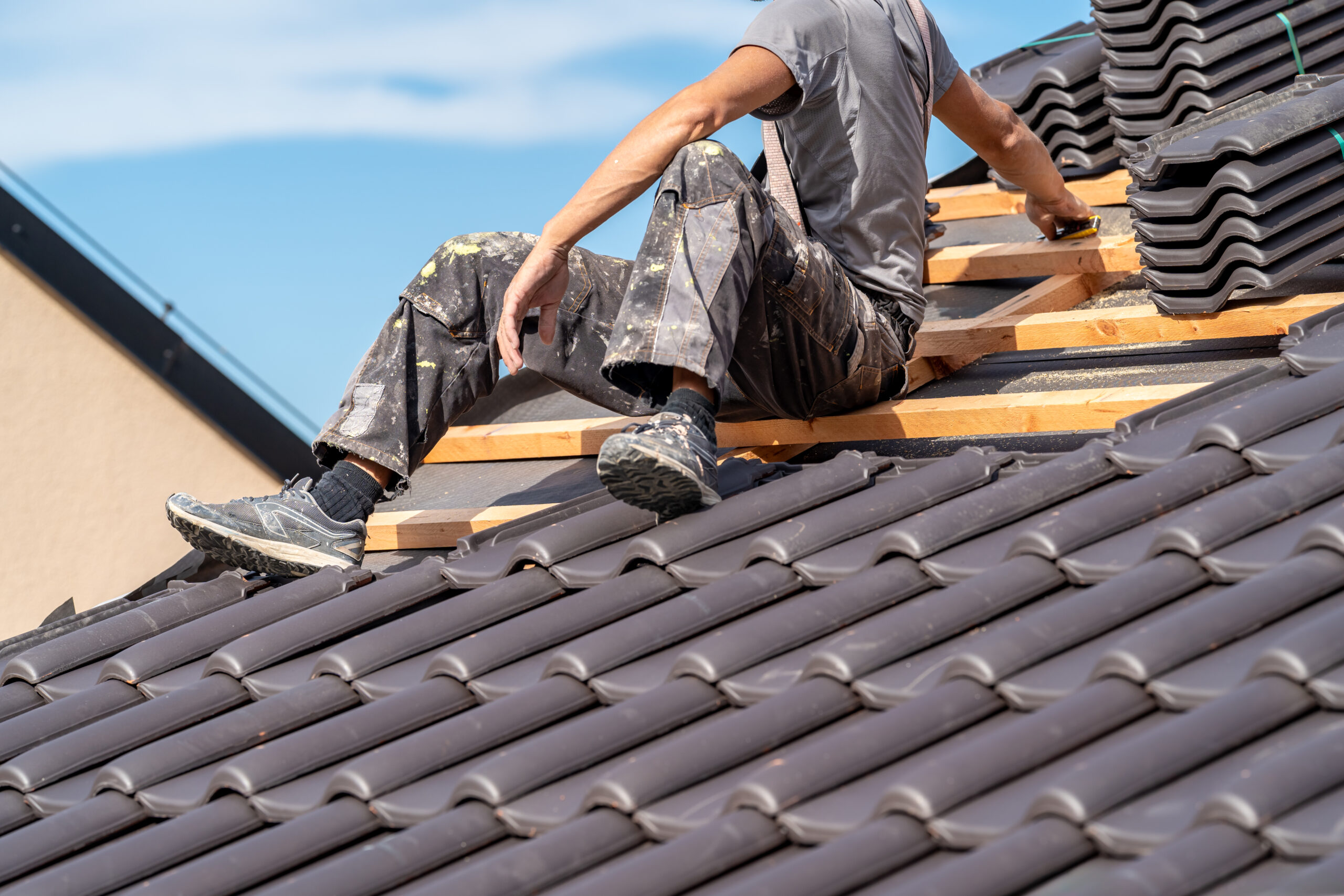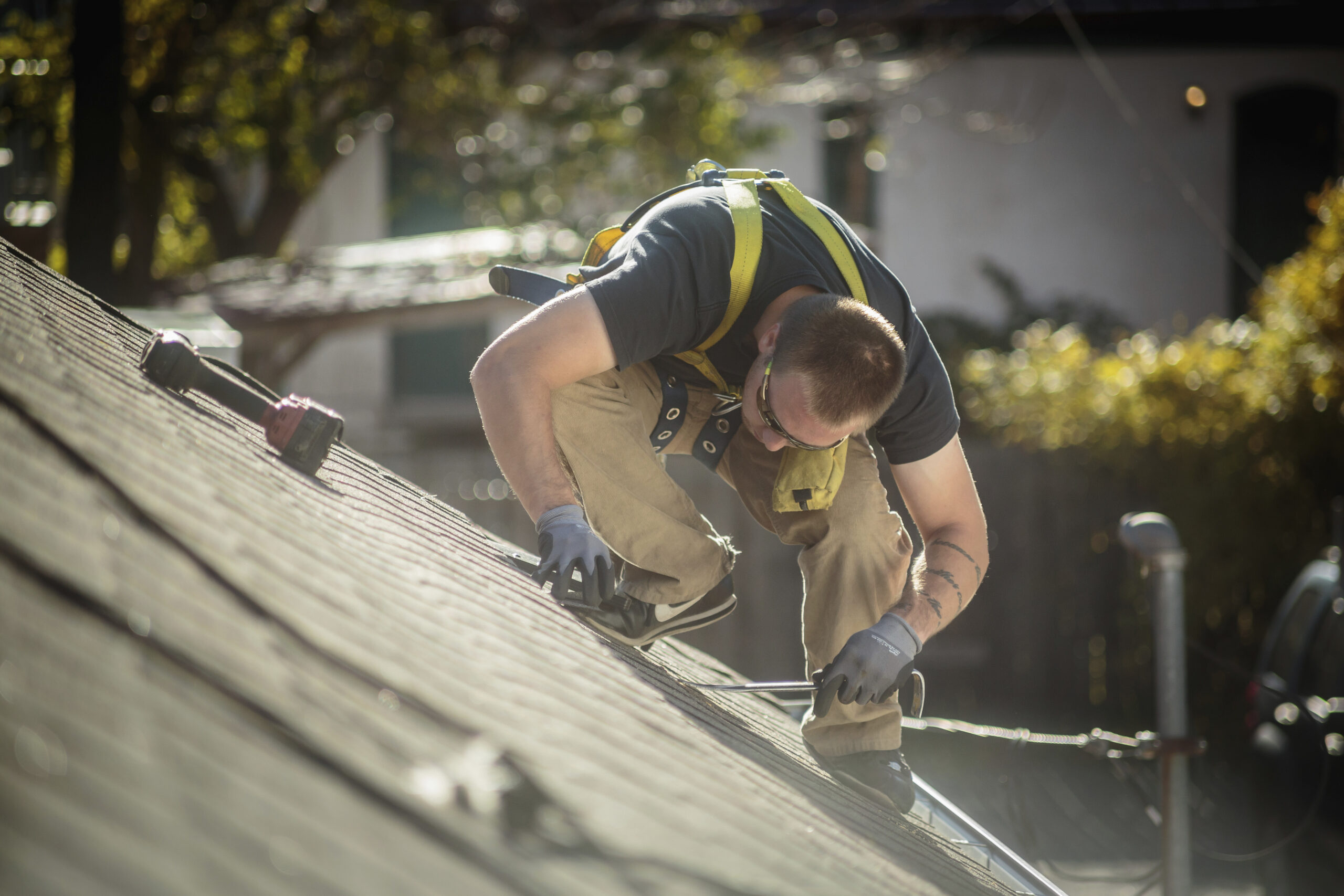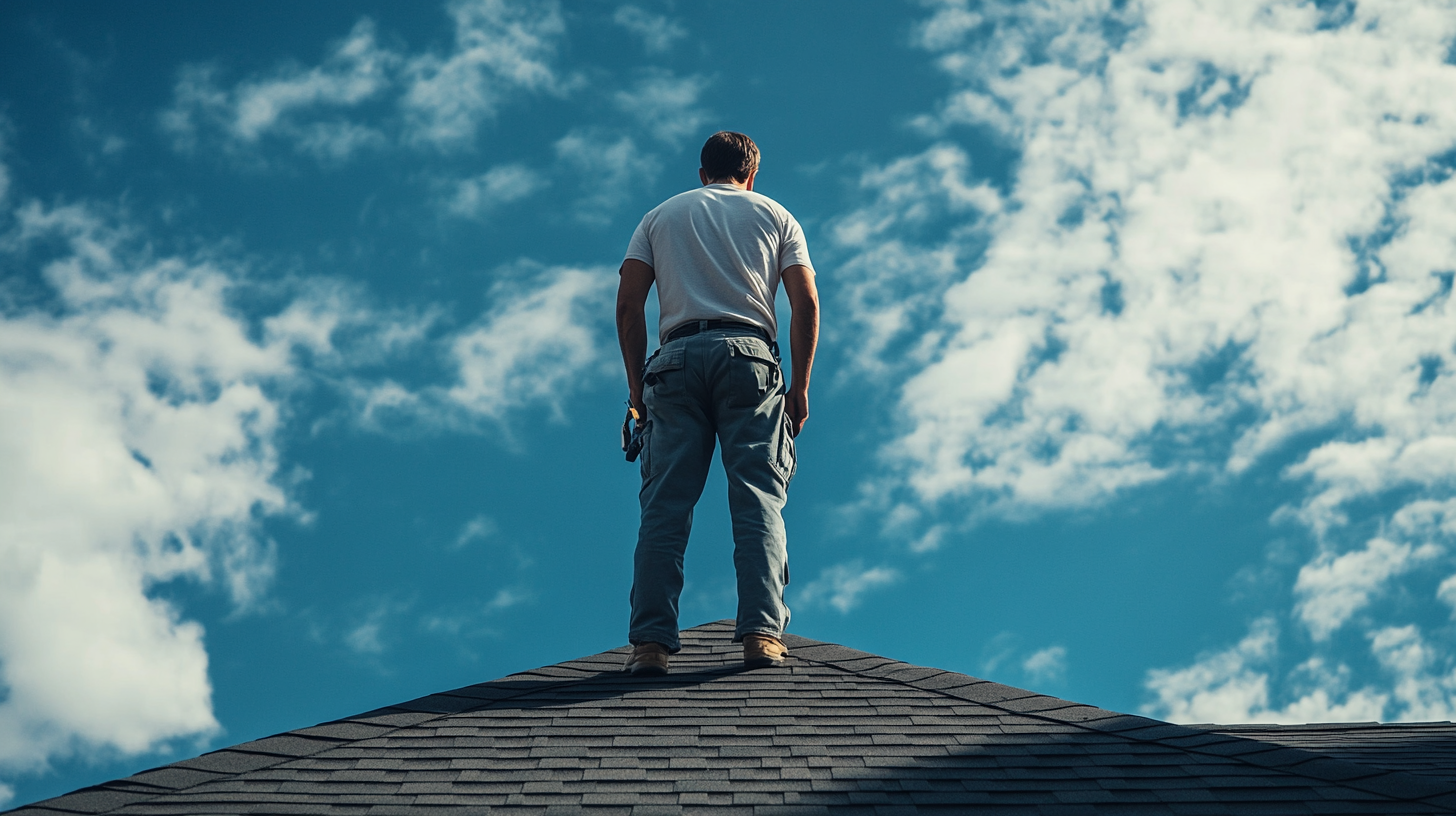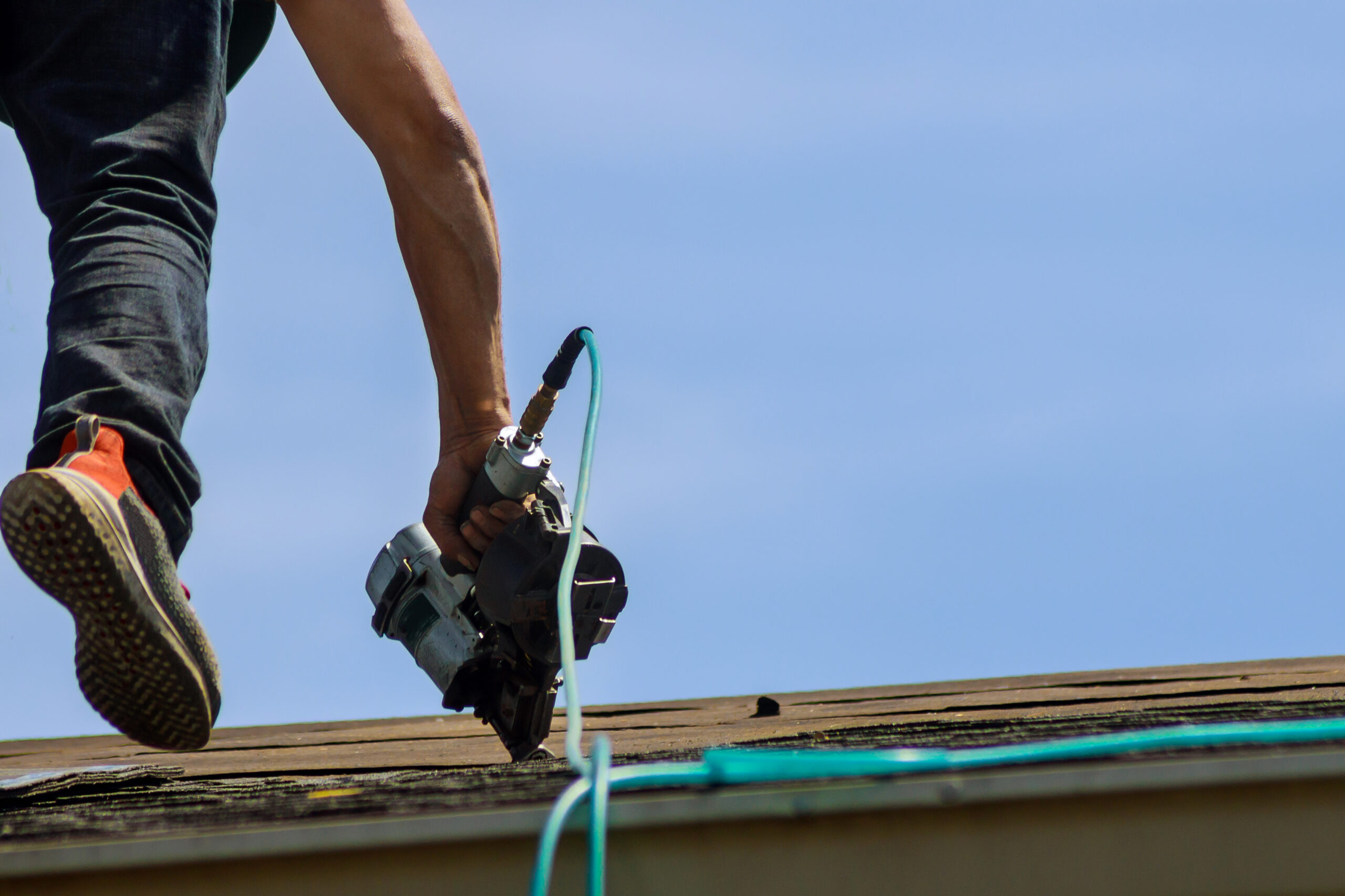How California’s Climate Impacts Your Roof and How to Protect It
8.7 Min Read
California’s diverse climate is one of its defining features, with a range of environmental conditions that span from the dry deserts in the south to the wet coastal regions and snowy mountains in the north. This geographical diversity results in a wide variety of weather patterns, each presenting unique challenges for homeowners, particularly when it comes to maintaining and protecting their roofs. Roofs are the first line of defense against these climatic elements, and understanding how California’s climate affects them is crucial for maintaining the integrity and longevity of your home. In this article, we’ll delve into how California’s climate impacts your roof and offer practical tips for ensuring it remains in top shape.
The Impact of California’s Climate on Roofing
Sun Exposure and Heat
In many parts of California, especially Southern California, the sun is a dominant factor throughout the year. The state’s sunny disposition is often a draw for residents and tourists alike, but prolonged sun exposure can cause roofing materials to deteriorate over time. Asphalt shingles, for example, can become brittle and crack under relentless solar radiation, leading to potential leaks and structural damage. Other materials may fade or warp due to the intense UV rays, compromising not only their aesthetic appeal but also their functionality.
Moreover, the heat from the sun can exacerbate the wear and tear on your roof. High temperatures can cause materials to expand and contract, which may result in the loosening of shingles or tiles over time. This thermal movement can create gaps or cracks that allow moisture to penetrate, further compromising the roof’s integrity. Therefore, understanding how to mitigate sun and heat damage is essential for homeowners in sunny climates.
Rain and Moisture
In coastal and northern areas, heavy rain is a common occurrence, often accompanied by strong winds that can exacerbate roofing issues. This can lead to moisture-related problems such as leaks, mold, and mildew if your roof isn’t properly maintained. The accumulation of moisture can weaken the structural components of the roof and lead to costly repairs if not addressed promptly. Even in drier parts of the state, occasional heavy rains can cause problems if your roof’s drainage system isn’t up to par, highlighting the need for adequate waterproofing and maintenance.
Furthermore, the coastal humidity can contribute to the growth of moss and algae on roofs, which can trap moisture and accelerate the deterioration of roofing materials. This is particularly concerning for roofs that lack sufficient sunlight to dry out after rain. Homeowners should be vigilant about inspecting their roofs for signs of moisture damage and take proactive measures to prevent long-term issues.
Wind
Strong winds, particularly those associated with Santa Ana winds in Southern California, can pose significant challenges to roofing structures. These winds can loosen shingles and tiles, leading to potential water ingress and structural damage. Additionally, wind can carry debris that may scratch or puncture roofing materials, further compromising their integrity. The combination of wind-driven rain can also exacerbate existing vulnerabilities in the roof, leading to leaks and other moisture-related problems.
Moreover, wind can cause uplift pressure on roofs, especially if they are not properly secured. This uplift can lead to the detachment of roofing materials, exposing the underlayment and decking to the elements. Therefore, ensuring that your roof is well-secured and free from debris is crucial in areas prone to strong winds.
Snow and Ice
While not a concern for all Californians, those living in the mountainous regions must contend with snow and ice. The weight of snow can be immense, putting significant stress on roofing structures and potentially leading to collapse if not adequately supported. Ice dams can also form at the edges of roofs, leading to water backup and leaks, which can cause extensive damage to both the exterior and interior of homes.
Additionally, the freeze-thaw cycle can exacerbate roofing issues, as water trapped in small cracks can expand and contract, widening the gaps over time. This process can accelerate the deterioration of roofing materials and increase the risk of leaks. Homeowners in snowy regions should take proactive measures to manage snow and ice accumulation on their roofs.

Protecting Your Roof from California’s Climate
Regular Inspections
One of the best ways to protect your roof is by conducting regular inspections. Aim to inspect your roof at least twice a year, ideally in the spring and fall, to catch potential issues before they become major problems. During these inspections, look for signs of wear and tear, such as cracked or missing shingles, damaged flashing, or clogged gutters. Addressing minor issues early can prevent costly repairs down the road and extend the life of your roof.
In addition to biannual inspections, it’s important to check your roof after extreme weather events, such as storms or high winds. These events can cause unexpected damage that may not be immediately visible but can lead to significant issues if left unaddressed. Regular inspections are a proactive step in maintaining the health of your roof.
Choose the Right Materials
Selecting the appropriate roofing materials for your specific climate zone is crucial. In sunny areas, consider materials that reflect heat, such as metal or light-colored shingles, to reduce cooling costs and minimize heat-related damage. For regions with heavy rainfall, ensure your roof has adequate drainage and consider materials like slate or tile, which are more resistant to water damage and can withstand the wear and tear of frequent precipitation.
Additionally, in areas prone to snow and ice, materials that can withstand freezing temperatures and heavy loads are essential. Metal roofs, for example, are highly durable and can shed snow effectively. By choosing materials that are well-suited to your local climate, you can enhance the durability and performance of your roof.
Maintain Gutters and Downspouts
Proper drainage is essential for preventing water-related damage to your roof. Keep gutters and downspouts clear of leaves, twigs, and debris to ensure rainwater flows away from your roof and foundation. Regular cleaning can prevent blockages that lead to water pooling and potential leaks, which can cause significant damage if not addressed promptly.
In addition to regular cleaning, consider installing gutter guards to reduce debris buildup and minimize maintenance efforts. Ensuring that your drainage system is functioning properly is a critical step in protecting your roof from water-related issues.
Trim Surrounding Trees
Overhanging branches can rub against your roof, causing damage to shingles and tiles. They can also drop leaves and debris into your gutters, leading to clogs and potential water damage. Regularly trim trees near your home to minimize these risks and maintain a clear space around your roof.
Additionally, trees can provide pathways for pests, such as squirrels and birds, to access your roof, potentially causing further damage. By keeping trees trimmed and well-maintained, you can reduce the risk of both physical and pest-related damage to your roof.
Insulate and Ventilate
Proper insulation and ventilation help regulate temperature and moisture levels in your attic, reducing the risk of ice dams and preventing heat buildup. This not only protects your roof but also improves your home’s energy efficiency, resulting in lower utility bills and a more comfortable living environment.
Effective ventilation allows excess heat and moisture to escape, preventing the conditions that can lead to mold growth and structural damage. By ensuring that your attic is properly insulated and ventilated, you can enhance the overall health and longevity of your roof.

Additional Tips for Roof Longevity
Apply Roof Coatings
Roof coatings can provide an extra layer of protection against the elements. These coatings can help reflect sunlight, reduce heat absorption, and provide a waterproof barrier, extending the life of your roofing materials. Consider applying a reflective coating if your home is in a particularly sunny area to minimize heat-related damage and improve energy efficiency.
Moreover, roof coatings can seal small cracks and gaps, preventing moisture infiltration and reducing the risk of leaks. By investing in a quality roof coating, you can enhance the durability and performance of your roof.
Professional Maintenance
While DIY maintenance is important, it’s also crucial to enlist the services of a professional roofing contractor periodically. Professionals can identify issues you might overlook and provide expert repairs and maintenance, ensuring that your roof remains in optimal condition. They can also offer advice tailored to your specific roof type and local climate, helping you make informed decisions about maintenance and repair.
In addition to routine maintenance, professionals can conduct more thorough inspections and provide specialized services, such as roof cleaning and coating applications. By partnering with a trusted roofing professional, you can ensure that your roof receives the care and attention it needs to withstand California’s diverse climate.
Prepare for Extreme Weather
California is not immune to extreme weather events, including wildfires and earthquakes. Ensure your roof is prepared by using fire-resistant materials and securing any loose components to minimize damage during these events. For earthquake-prone areas, regular inspections can help detect and mitigate potential vulnerabilities, ensuring that your roof remains stable and secure.
Additionally, consider implementing a disaster preparedness plan that includes roof-specific measures, such as securing loose items and reinforcing structural components. By taking proactive steps to prepare for extreme weather, you can protect your roof and home from potential damage.
Conclusion
California’s diverse climate can pose significant challenges to your roof, but with the right roof maintenance and preparation, you can protect your home and extend the life of your roof. By understanding the specific threats posed by your local climate and taking proactive steps, you’ll be better equipped to handle whatever Mother Nature throws your way.
Regular inspections, choosing the right materials, and working with professionals are all key components of a comprehensive roof maintenance strategy. By following these guidelines, you can ensure your roof stands strong against California’s unique weather conditions for years to come, safeguarding your investment and enhancing the comfort and safety of your home.
Contact Frontline Roofing for Expert Assistance
If you’re looking to protect your roof from California’s diverse climate, don’t hesitate to reach out to Frontline Roofing. Our team of experienced professionals is ready to provide you with tailored solutions, from regular inspections to expert repairs and maintenance. Ensure your roof remains in top shape and safeguard your home against the elements.
Contact us today to schedule a consultation and keep your roof strong and secure!
continue reading
Related Posts
When it’s time to repair or replace your roof, one […]
When it comes to commercial and industrial roofing in California, […]
Your roof is your home’s first line of defense against […]






